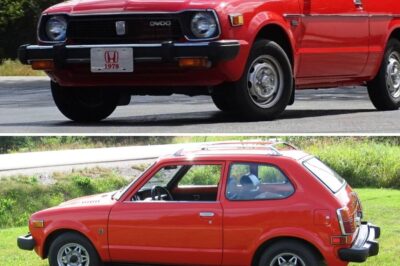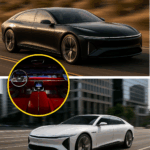In April 2025, the automotive industry in the United States was rocked by the implementation of sweeping 25 percent tariffs on imported vehicles. One of the most high-profile responses to these new tariffs came from Ford Motor Company, especially concerning two of its most popular models: the Ford Bronco Sport and the Ford Maverick. Both of these vehicles are manufactured in Mexico, placing them squarely in the crosshairs of the new import taxes.

The Trump administration’s tariff policy aims to encourage domestic production and reduce the trade imbalance by taxing vehicles brought into the country from foreign manufacturing plants. However, this policy has had immediate and complex ramifications for automakers like Ford, which rely on integrated North American production strategies to deliver value and efficiency.
The Ford Bronco Sport and the Ford Maverick have both been standout models in Ford’s lineup since their respective launches. The Bronco Sport, a rugged crossover SUV with off-road credentials, appeals to adventure-seeking drivers who want a vehicle that is both capable and compact. Meanwhile, the Ford Maverick has carved a unique niche as a small, affordable hybrid pickup truck, delivering impressive fuel economy and urban versatility at a relatively low entry price.
Both vehicles are assembled at Ford’s Hermosillo plant in Mexico. Because of this, they are now subject to the full 25 percent tariff when imported into the United States. Despite this financial burden, Ford has not publicly announced any immediate plans to halt production of these models or relocate their manufacturing to the U.S. Instead, Ford has opted for a bold and consumer-friendly response: the company launched a nationwide pricing promotion dubbed “From America, for America.”
Under this campaign, Ford is offering employee pricing to all customers on most 2024 and 2025 model-year Ford and Lincoln vehicles. This aggressive pricing strategy, which typically provides several thousand dollars in savings, is designed to offset the sticker shock that could come from vehicles affected by the tariff. The program runs through June 2, 2025, and applies broadly across the lineup, although certain exceptions exist, such as the high-performance Raptor variants and large SUVs like the Ford Expedition and Lincoln Navigator.
The decision to use pricing incentives rather than production shifts or price hikes reflects Ford’s broader strategy and confidence in its product mix. By absorbing some of the cost internally and passing on savings to customers, Ford hopes to maintain sales momentum and customer loyalty during a volatile economic period. It also gives the company time to evaluate longer-term options, such as rebalancing production footprints or lobbying for revised trade terms.

While some automakers, like Audi and Jaguar Land Rover, have halted U.S. imports altogether, Ford has opted to stay the course. This approach contrasts with others in the industry who are taking more drastic action in the face of the tariffs. For example, Audi reportedly suspended all U.S. imports and is labeling remaining vehicles with “No Added Import Fee” to reassure buyers. Stellantis, the parent company of brands like Jeep and Dodge, has paused production of several models built in Canada and Mexico.
What makes Ford’s approach particularly noteworthy is the strategic importance of the Bronco Sport and Maverick. These models have proven highly successful in appealing to younger and more budget-conscious buyers—key demographics for Ford’s long-term market share. Pulling these vehicles from the U.S. market or pricing them out of reach could risk alienating these consumers.
Ford’s pricing strategy also reflects broader economic and political considerations. The company is aligning itself with the spirit, if not the letter, of the Trump administration’s “America First” manufacturing ethos by focusing on making vehicles accessible to American consumers without immediately upending its supply chain. In doing so, Ford positions itself as both responsive to the administration’s goals and sensitive to consumer needs.
Additionally, Ford’s decision to absorb tariff costs temporarily is likely informed by an understanding of the political landscape. Tariff policies are inherently unstable, subject to reversal or revision based on trade negotiations and electoral outcomes. Ford’s move to maintain status quo production while offering pricing relief could be seen as a bet that these tariffs may not last long enough to justify costly factory relocations.
The Bronco Sport and Maverick’s continued availability on the U.S. market without massive price hikes also benefits Ford dealers, many of whom rely on these popular models to drive foot traffic and close deals. Dealers are often caught in the middle during times of tariff upheaval, as they face consumer frustration over price increases while also bearing the brunt of reduced inventory or altered supply chains. Ford’s strategy offers them some stability in an otherwise uncertain moment.
Consumer reception to the employee pricing program has been generally positive. Shoppers appreciate the transparency and savings, and Ford has generated goodwill at a time when many buyers are struggling with high interest rates, inflation, and overall economic uncertainty. The company’s clear communication around the program and its rationale has helped reinforce trust in the brand.
Looking ahead, the success or failure of Ford’s response to the tariffs may set the tone for the broader industry. If the Bronco Sport and Maverick continue to sell well despite the tariffs, it may validate Ford’s strategy of absorbing short-term costs in exchange for long-term market share. Alternatively, if sales falter or internal financial pressures mount, the company may be forced to reconsider its approach.
In conclusion, the 25 percent tariffs imposed on imported vehicles have created significant challenges for automakers, particularly those like Ford with popular models built in Mexico. Rather than panic or overreact, Ford has chosen to mitigate the impact through customer-focused pricing strategies that maintain accessibility and market presence. The Bronco Sport and Maverick remain key components of Ford’s U.S. portfolio, and the company’s current strategy ensures they stay within reach for American consumers—at least for now. Whether this approach will remain viable in the long term depends on a variety of factors, including trade negotiations, consumer demand, and the evolving competitive landscape.
News
Taylor Swift’s Inner Circle Reveals Shocking Truth Behind Her Silence—Why She’s Choosing to Lay Low Right Now
Taylor Swift Takes a Break from the Spotlight Amid Relationship and Privacy Concerns As Taylor Swift and Travis Kelce continue…
SHOCKING MOVE: BMW WILL COVER TARIF COSTS For Cars Built in Mexico—But What’s Really Behind This Desperate Strategy?
In April 2025, the automotive industry in the United States was rocked by the implementation of sweeping 25 percent tariffs…
You Won’t Believe What Happens When You Try to Destroy a 1978 Honda Civic—This Tiny Classic Car Takes a Beating Like a Tank and Still Won’t Quit
1978 Honda Civic: “The Tough Little Car That Laughs at Potholes” American Honda Motor Co., Ltd – Original Print Ad…
End of content
No more pages to load









